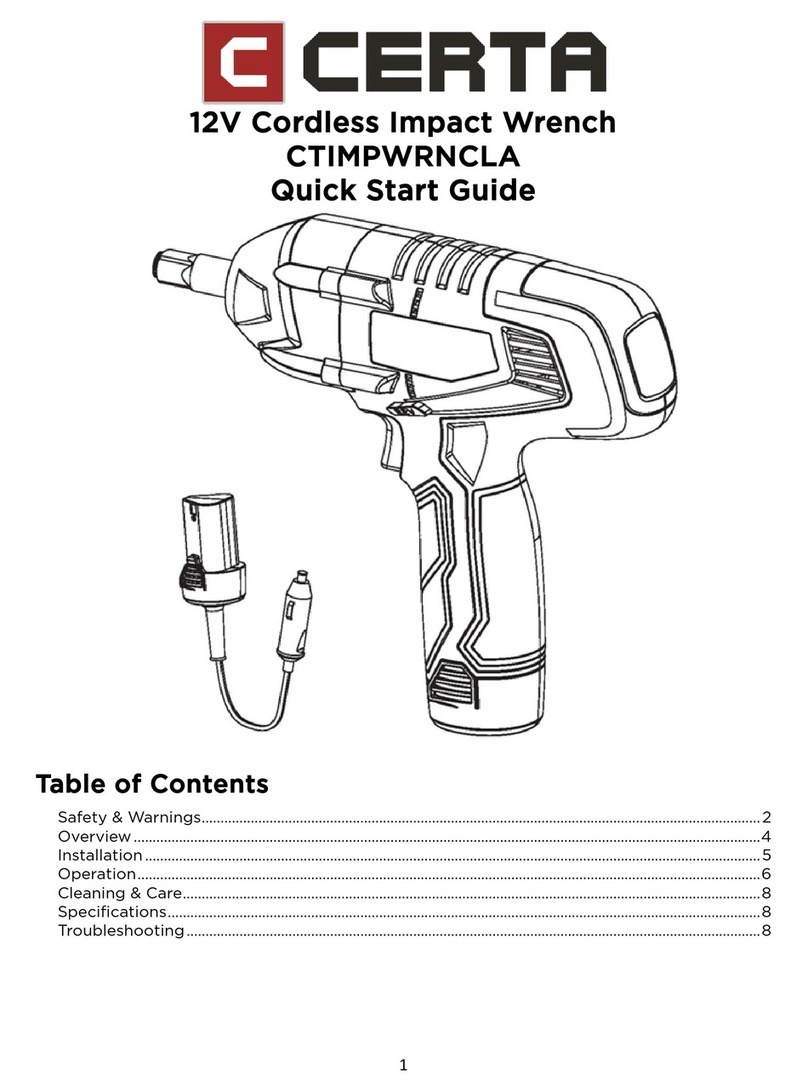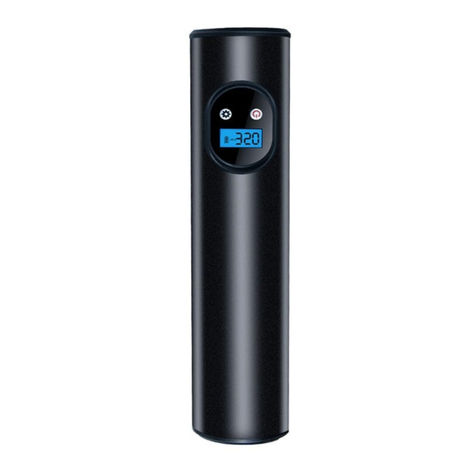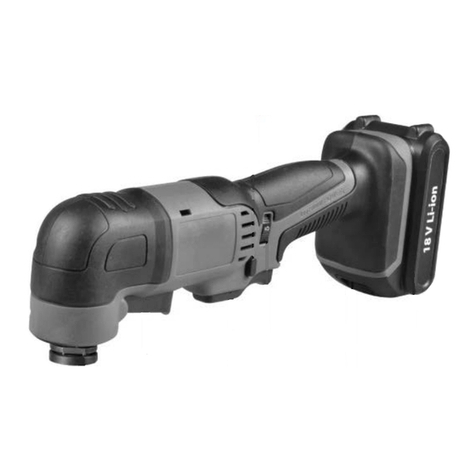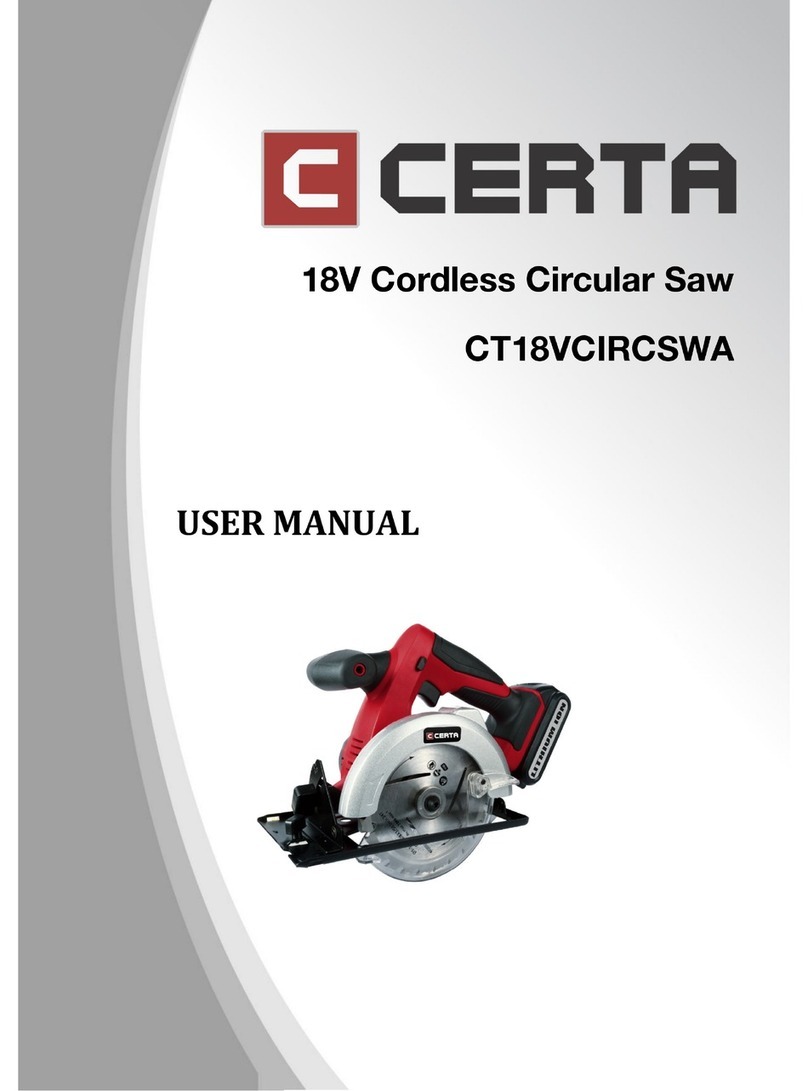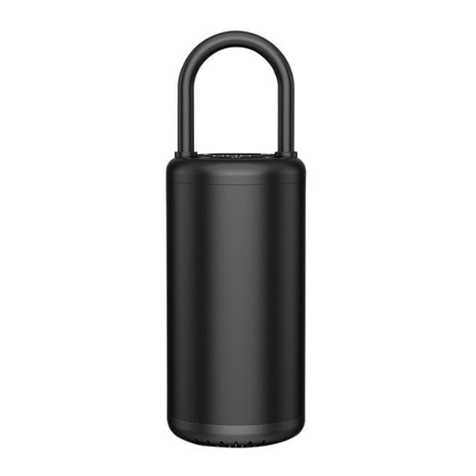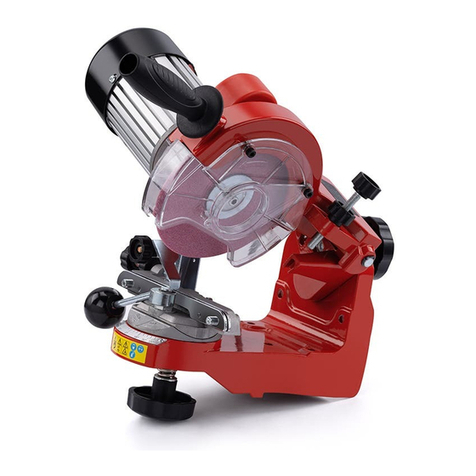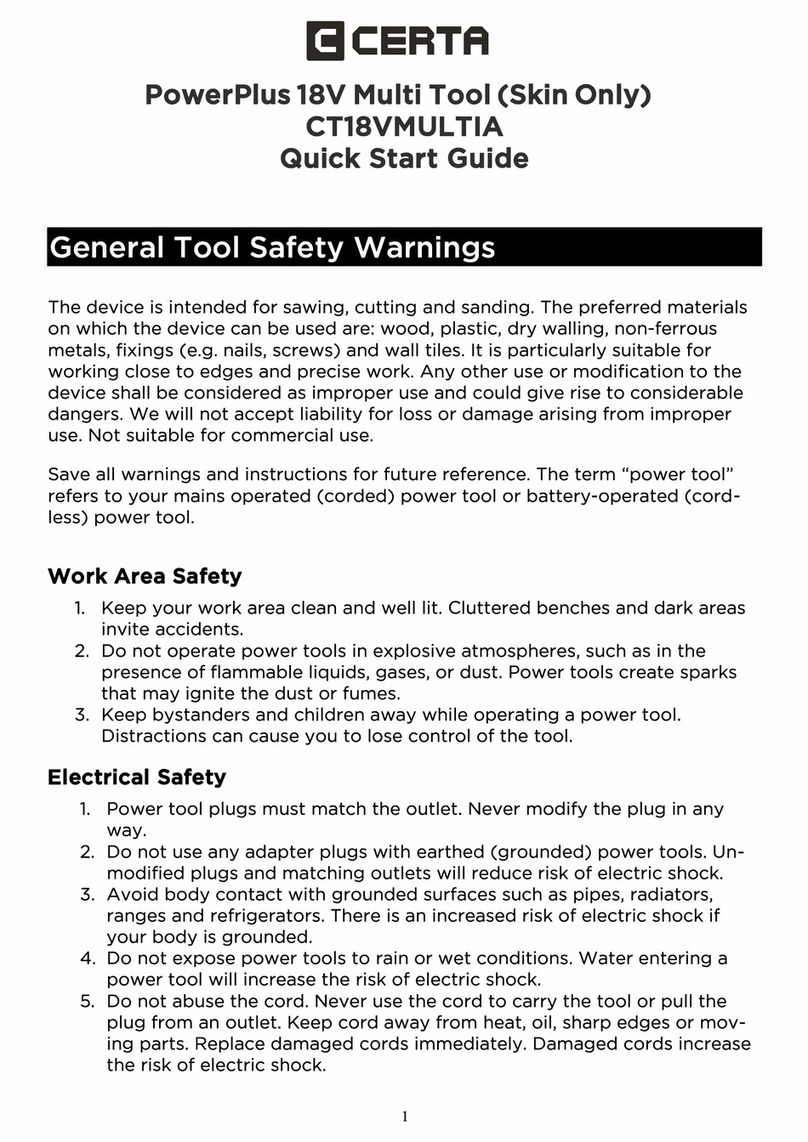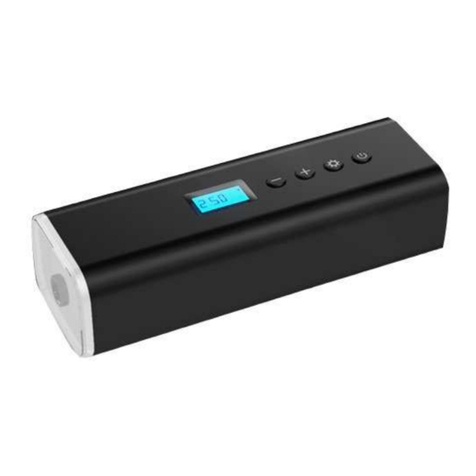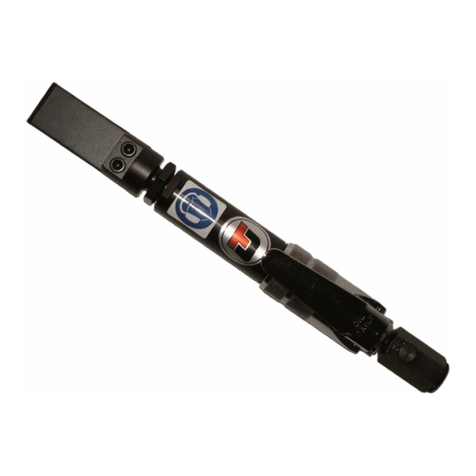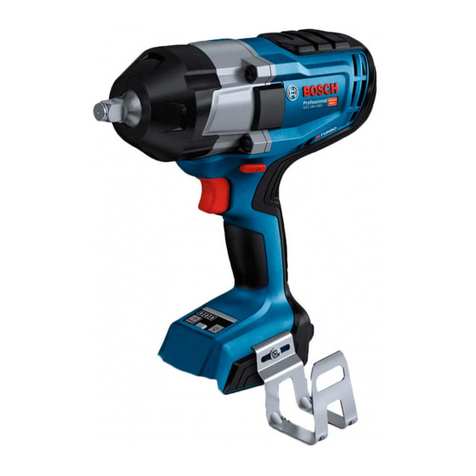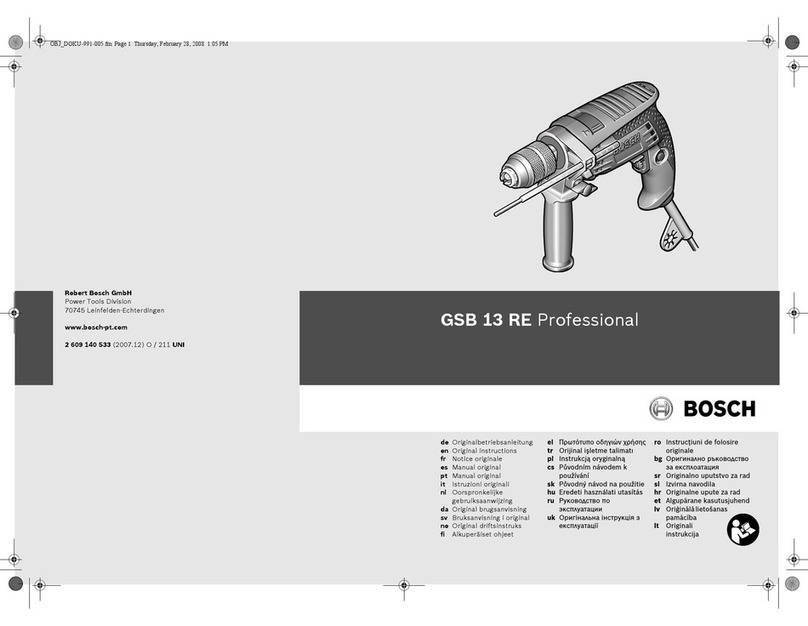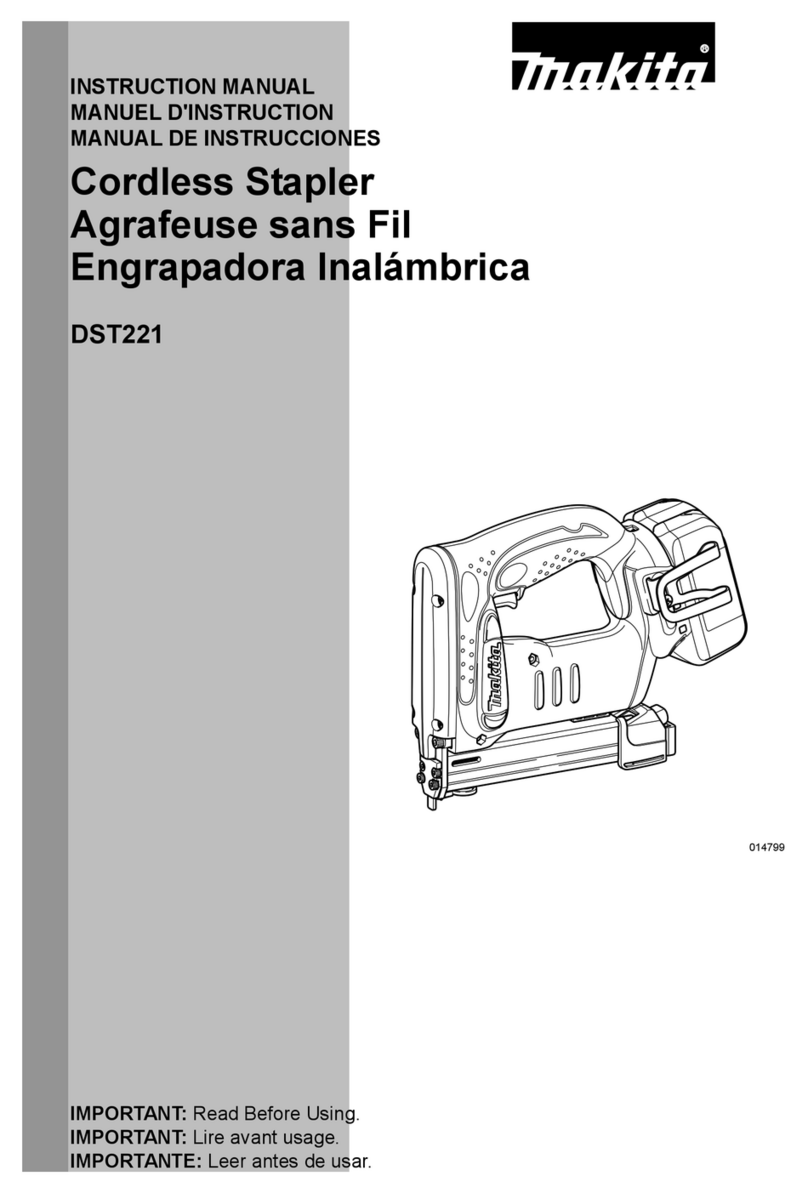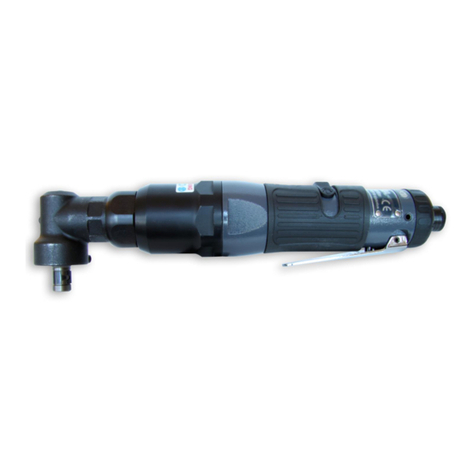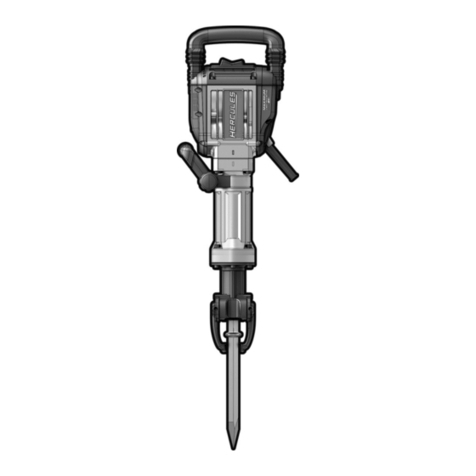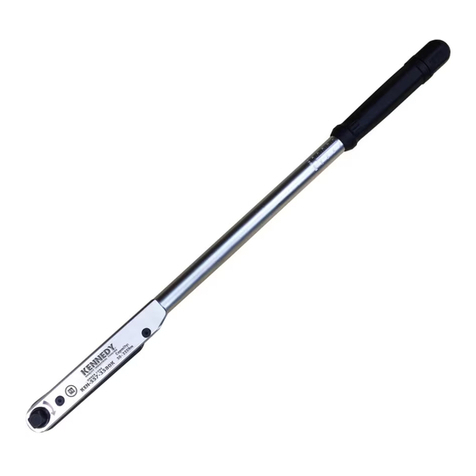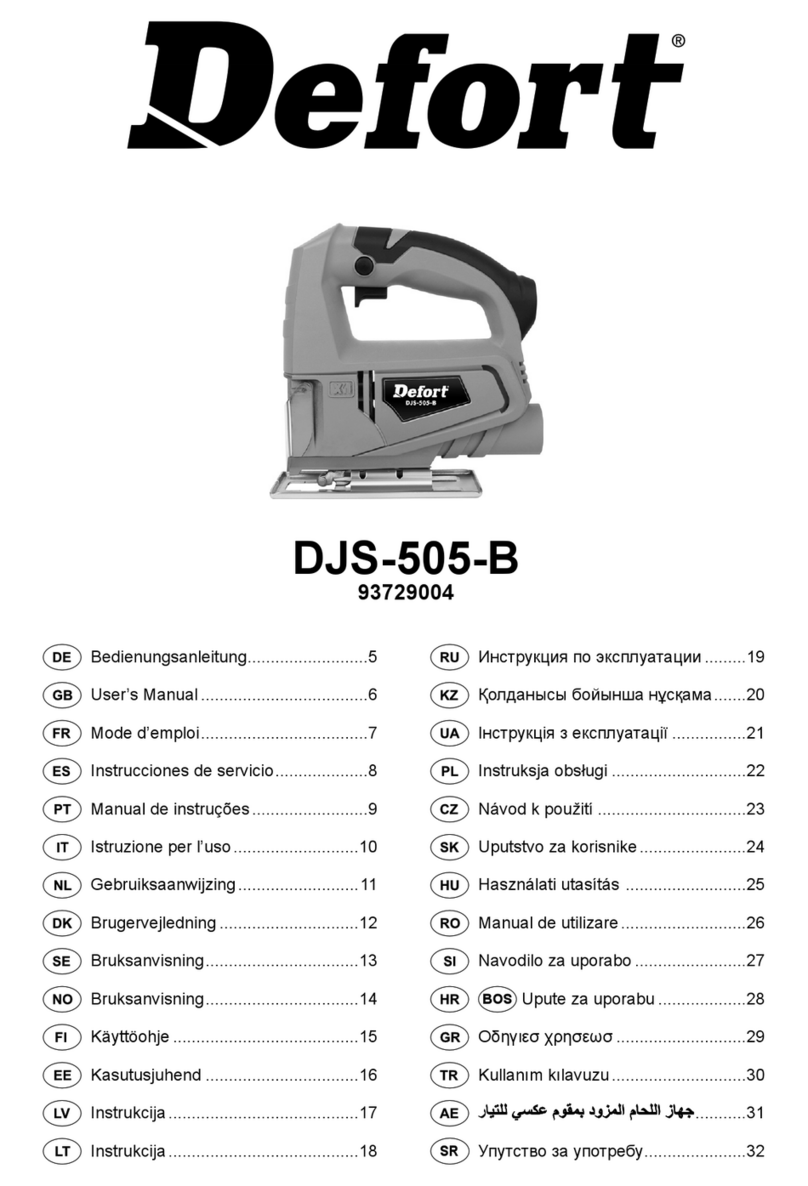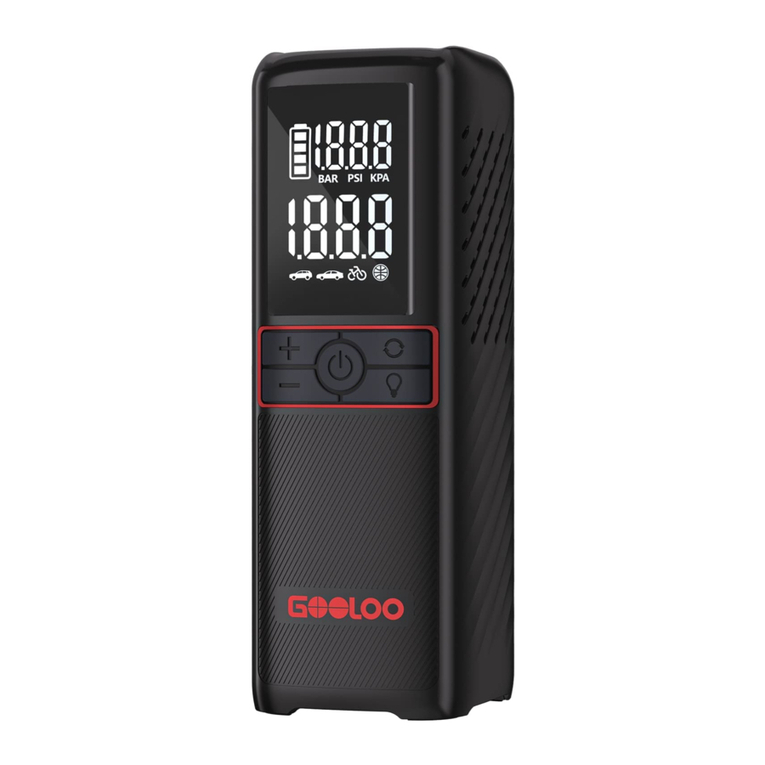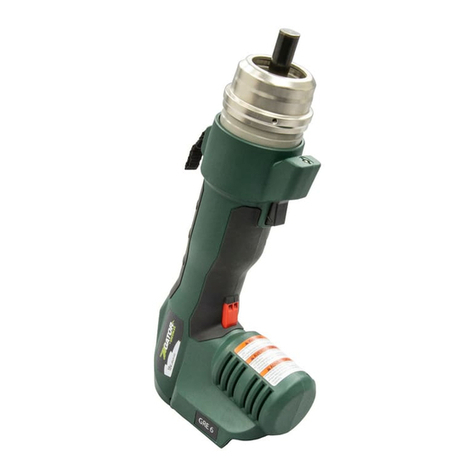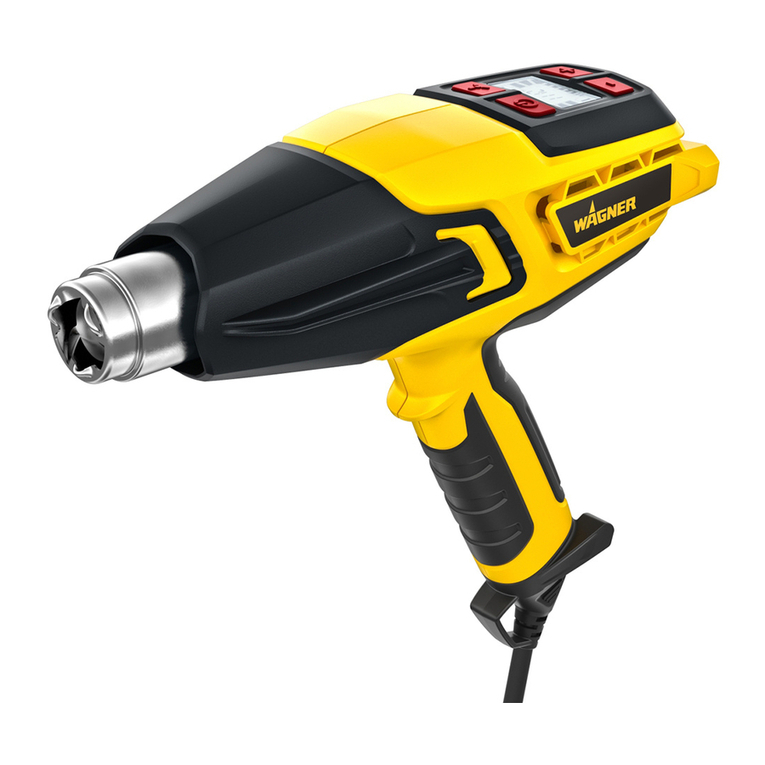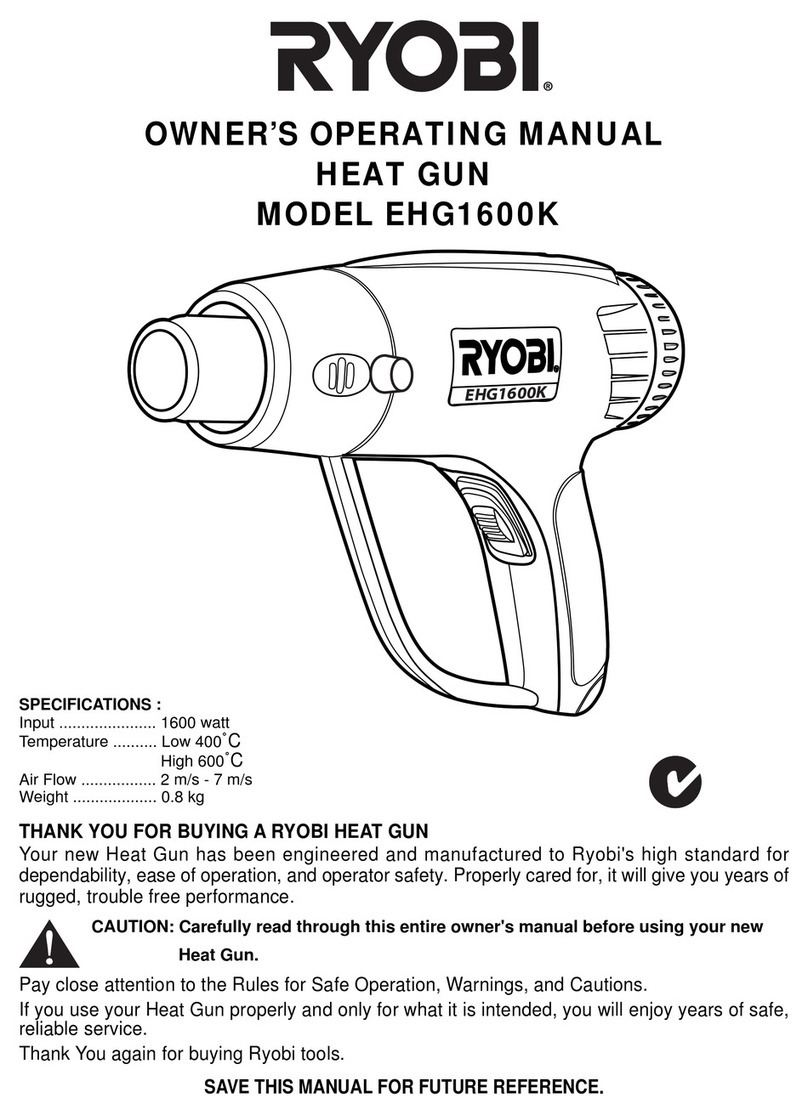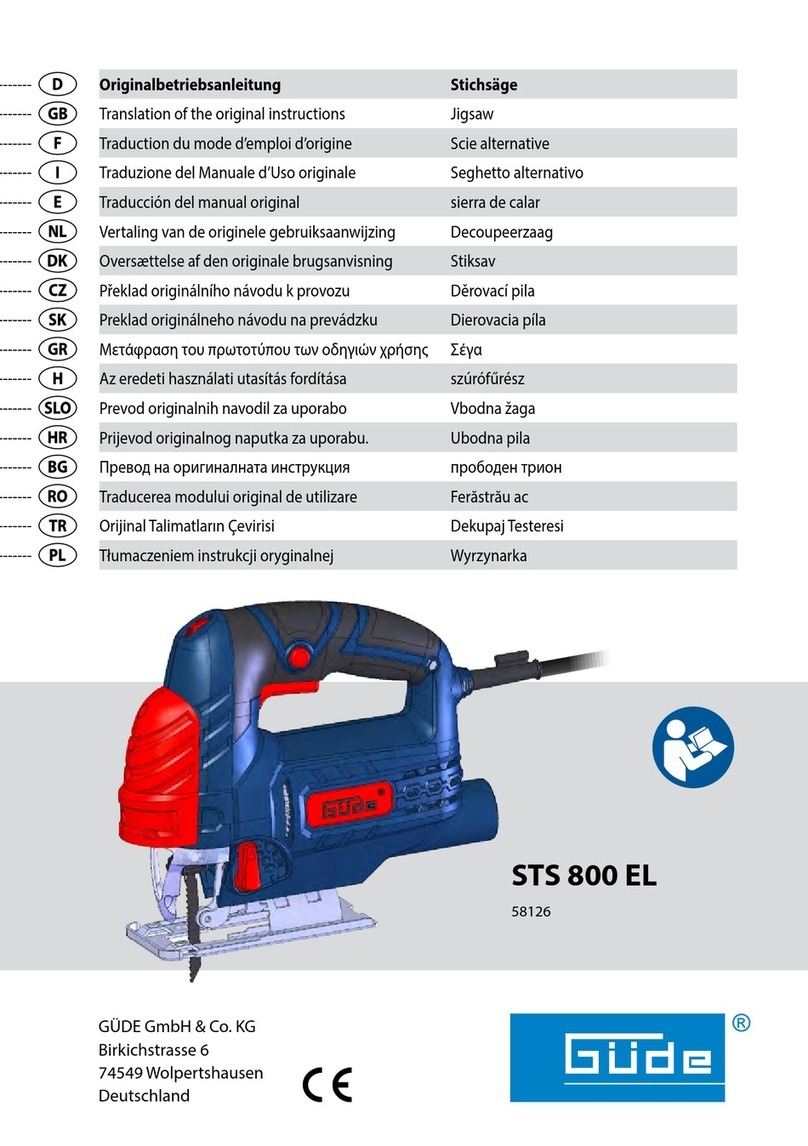Certa CT18VIMPWRA User manual


Table of Contents
General Tool Safety Warnings......................................................................................................2
Work Area........................................................................................................................................2
Electrical Safety.............................................................................................................................2
Personal Safety..............................................................................................................................2
Power Tool Use and Care..........................................................................................................3
Battery Tool Use and Care........................................................................................................3
Additional Warnings Applica le for the Impact Driver................................................4
Important Safety Instructions for Battery Charger........................................................4
Important Safety Instructions for the Battery Pack.......................................................5
Sym ols.................................................................................................................................................6
Product Information.........................................................................................................................6
Layout................................................................................................................................................6
Intended Use...................................................................................................................................7
Technical Specifications.............................................................................................................7
Charging Battery Pack.....................................................................................................................7
Impact Driver Operations...............................................................................................................8
Changing the Tool........................................................................................................................8
Inserting the Battery ...................................................................................................................8
Reversing the Rotational Direction.......................................................................................8
ON/OFF switch..............................................................................................................................8
Adjusting the Speed....................................................................................................................9
Usage Advice..................................................................................................................................9
Screw Applications with Hard, Spring-loaded or Soft Seat........................................9
Recommendations for Optimal Handling of the Battery ..........................................10
Maintenance and Servicing..........................................................................................................10
1

General Tool Safety Warnings
Save all warnings and instructions for future reference.
The term “power tool” refers to your mains operated (corded) power tool or
attery-operated (cordless) power tool.
Work Area
1. Keep your work area clean and well lit. Cluttered enches and dark areas
invite accidents.
2. Do not operate power tools in explosive atmospheres, such as in the
presence of flamma le liquids, gases, or dust. Power tools create sparks
which may ignite the dust or fumes.
3. Keep ystanders and children away while operating a power tool.
Distractions can cause you to lose control.
Electrical Safety
1. Power tool plugs must match the outlet. Never modify the plug in any
way. Do not use any adapter plugs with earthed (grounded) power tools.
Unmodified plugs and matching outlets will reduce risk of electric shock.
2. Avoid ody contact with grounded surfaces such as pipes, radiators,
ranges and refrigerators. There is an increased risk of electric shock if your
ody is grounded.
3. Do not expose power tools to rain or wet conditions. Water entering a
power tool will increase the risk of electric shock.
4. Do not a use the cord. Never use the cord to carry the tools or pull the
plug from an outlet. Keep cord away from heat, oil, sharp edges or moving
parts. Replace damaged cords immediately. Damaged cords increase the
risk of electric shock.
5. When operating a power tool outdoors, use an extension cord suita le for
outdoor use. Use of a cord suita le fir outdoor use reduces the risk of
electric shock.
6. If operating a power tool in a damp location is unavoida le, use a Ground
Fault Circuit Interrupter (GFCI) protected supply. Use of a GFCI reduces
the risk of electric shock.
Personal Safety
1. Stay alert, watch what you are doing and use common sense when
operating a power tool. Do not use tool while tired or under the influence
of drugs, alcohol, or medication. A moment of inattention while operating
power tools may result in serious personal injury.
2. Use personal protective equipment. Always wear eye protection. Safety
equipment such as dust mask, non-skid safety shoes, hard hat, or hearing
protection used for appropriate conditions will reduce personal injuries.
3. Prevent unintentional starting. Ensure the switch is in the off-position
efore connecting to power source and/or attery pack, picking up or
carrying the tool. Carrying power tools with your finger on the switch or
2

energizing power tools that have the switch on invites accidents.
4. Dress properly. Do not wear loose clothing or jewellery. Keep your hair,
clothing, and gloves away from moving parts. Loose clothes, jewelry, or
long hair can e caught in moving parts.
5. Remove adjusting keys or wrenches efore turning the tool on. A wrench
or a key that is left attached to a rotating part of the tool may result in
personal injury.
6. Do not overreach. Keep proper footing and alance at all times. The
ena les etter control of the power tool in unexpected situations.
7. Only use safety equipment that has een approved y an appropriate
standards agency. Unapproved safety equipment may not provide
adequate protection. Eye protection must e ANSI-approved and
reathing protection must e NIOSH-approved for the specific hazards in
the work area.
Power Tool Use and Care
1. Do not force tool. Use the correct tool for your application. The correct
tool will do the jo etter and safer at the rate for which it is designed.
2. Do not use tool if switch does not turn it on or off. Any power tool that
cannot e controlled with the switch is dangerous and must e repaired.
3. Disconnect the plug from the power source and/or the attery pack from
the power tool efore making any adjustments, changing accessories, or
storing the tool. Such preventive safety measures reduce risk of starting
the tool accidentally.
4. Store idle power tools out of the reach of children and other untrained
persons. Power tools are dangerous in the hands of untrained users.
5. Maintain tools with care. Check for misalignment or inding of moving
parts, reakage of parts and any other condition that may affect the
power tool’s operation. If damaged, have the power tool repaired efore
use. Many accidents are caused y poorly maintained power tools.
6. Keep cutting tools sharp and clean. Properly maintained tools with sharp
cutting edges are less likely to ind and are easier to control.
7. Use only accessories that are recommended y the manufacturer for your
model. Accessories that may e suita le for one tool may ecome
hazardous when used on another tool.
Battery Tool Use and Care
1. Ensure the switch is in the off position efore inserting attery pack. Insert
the attery pack into power tools that have the switch on invites
accidents.
2. Recharge only with the charger specified y the manufacturer. A charger
that is suita le for one type of attery pack may create a risk of fire when
used with another attery pack.
3. Use power tools only with specifically designated attery packs. Use of
any other attery packs may create a risk of injury and fire.
4. When attery pack is not in use, keep it away from other metal o jects
like paper clips, coins, keys, nails, screws, or other small metal o jects that
can make a connection from one terminal to another. Shorting the attery
3

terminals together may cause urns or a fire.
5. Under a usive conditions, liquid may e ejected from the attery, avoid
contact. If contact accidentally occurs, flush with water. If liquid contacts
eyes, additionally seek medical help. Liquid ejected from the attery may
cause irritation or urns.
Additional Warnings Applicable for the I pact Driver
•Hold power tool by insulated gripping surfaces, when perfor ing an
operation where the cutting accessory or fastener ay contact hidden
wiring. Cutting accessory and fasteners contacting a “live” wire may make
exposed metal parts of the power tool “live”, which can give the operator
an electric shock.
•Use appropriate detectors to deter ine if utility lines are hidden in the
work area or call the local utility co pany for assistance. Contact with
electric lines can lead to fire and electric shock. Damaging a gas line can
lead to explosion. Penetrating a water line causes property damage and
may cause an electric shock.
•Switch off the power tool i ediately when the tool insert ja s. Be
prepared for high reaction torque that can cause kick ack.
•Hold the achine with a fir grip. High reaction torque can riefly occur
while driving in and loosening screws.
•Secure the work piece. A work piece clamped with clamping devices or in
a vice is held more securely than y hand.
•Be extra careful when cutting in high or hard-to-reach locations. Avoid
sawing overhead. Be on the lookout for hidden wires and falling de ris.
•Keep your workplace clean. Blends of materials are particularly
dangerous. Dust from light alloys can urn or explode.
•Always wait until the achine has co e to a co plete stop before
placing it down. The tool insert can jam and lead to loss of control over
the power tool.
•Do not open the battery. Danger of short circuiting. Protect the attery
against heat, e. g., also against continuous sun irradiation and fire. There is
danger of explosion.
•In case of da age and i proper use of the battery, vapours ay be
e itted. Provide fresh air and seek medical help in case of complaints.
The vapours can irritate the respiratory system.
•When the battery is defective, liquid can escape and co e into contact
with adjacent co ponents. Check any parts concerned. Clean such parts
or replace them, if required.
I portant Safety Instructions for Battery Charger
•Before using battery charger, read all instructions and cautionary
arkings on battery charger, battery pack, and product using battery.
•Use only the charger which acco panied your product or direct
replace ent. Do not su stitute any other charger. Use only same supplier
approved chargers with your product.
•Do not disasse ble charger or operate the charger if it has received a
sharp blow, been dropped or otherwise da aged in any way. Incorrect
4

reassem ly may result in a risk of electric shock, electrocution or fire.
•Do not recharge battery in da p or wet environ ent. Do not expose
charger to rain or snow. If battery case is cracked or otherwise da aged,
do not insert into charger. Battery short or fire may result.
•Charge only sa e supplier approved rechargeable batteries. See
Functional Description and Specifications. Other types of atteries may
urst causing personal injury and damage.
•Charge battery pack in te peratures above 0ºC and below 45ºC. Store
tool and battery pack in locations where te peratures will not exceed
49ºC. This is important to prevent serious damage to the attery cells.
•Pull by plug rather than cord when disconnecting charger or when
disconnecting cords using the daisy chain feature. This will reduce risk of
damage to electric plug and cord.
•Make sure that cord is located so that it will not be stepped on, tripped
over, or otherwise subjected to da age or stress.
•Do not use an extension cord unless it is absolutely necessary. Use of
improper extension cord could result in risk of fire, electric shock, or
electrocution.
•Do not operate charger with da aged cords or plugs — have them
replaced immediately.
•Disconnect the charger fro the outlet before atte pting any cleaning.
This will reduce the risk of electric shock. Removing the attery pack will
not reduce this risk.
I portant Safety Instructions for the Battery Pack
•Do not incinerate the battery pack even if it is severely da aged or is
co pletely worn out. The attery pack can explode in a fire. Toxic fumes
and materials are created when lithium ion attery packs are urned.
•Do not charge or use battery in explosive at ospheres, such as in the
presence of fla able liquids, gases or dust. Inserting or removing the
attery from the charger may ignite the dust or fumes.
•If battery contents co e into contact with the skin, i ediately wash
area with ild soap and water. If attery liquid gets into the eye, rinse
water over the open eye for 15 minutes or until irritation ceases. If medical
attention is needed, the attery electrolyte is composed of a mixture of
liquid organic car onates and lithium salts.
•Contents of opened battery cells ay cause respiratory irritation.
Provide fresh air. If symptoms persist, seek medical attention.
•Charge the battery packs only in the charger which acco panied your
product.
•DO NOT splash or i erse in water or other liquids. This may cause
premature cell failure.
•Do not store or use the tool and battery pack in locations where the
te perature ay reach or exceed 40°C (such as outside sheds or etal
buildings in su er).
•When batteries are not in tool or charger, keep the away fro etal
objects.
•DO NOT put batteries into fire or expose to high heat. They may explode.
5

Sy bols
The following sym ols or initials may e used on the tool. Please see elow to
learn their meaning. Proper interpretation of these sym ols will allow you to
operate the tool etter and safer.
Sy bol Na e Designation/Explanation
V Volts Voltage
A Amperes Current
Hz Hertz Frequency (cycles per second)
Kg Kilograms Weight
Min Minutes Time
s Seconds Time
Ø Diameter Size of its, grinding wheel etc..
noNo load speed Rotational speed at no load
…/min Revolutions or
reciprocation per minute
Revolutions, strokes, surface speed,
or its etc.. per minute
0 Off position Zero speed, zero torque...
Arrow Action in the direction of the arrow
Direct current Type or a characteristic of current
Read manual sym ol Alerts user to refer to the manual
Wear eye protection Alerts user to wear eye protection
Class II construction Dou le insulated construction tools
Product Infor ation
Layout
1. Tool Holder
2. Rotational Direction Switch
3. ON/OFF Switch
4. Handle
5. Battery Pack
6. Battery Charger
7. Pushlock Button
6

Intended Use
This tool is intended for driving in and loosening screws as well as for drilling
into wood, metal, ceramic and plastic.
Even when a tool is used as prescri ed, it is not possi le to eliminate all residual
risk factors. The following hazards may arise in connection with the tool's
construction and design:
•Damage to lungs if an effective dust mask is not worn.
•Damage to hearing if effective hearing protection is not worn.
•Health defects resulting from vi ration emission of the power tool when
eing used over long periods of time, not eing adequately managed or
properly maintained.
Technical Specifications
Voltage Supply DC 18V
No Load Speed 0-2400 min-1
Maximum Torque 180Nm
Forward & Reverse Rotation Yes
Battery Capacity 1300mA
Rating Voltage for Charger AC 100-240V~/50-60Hz
Charging Time 1 hour
WARNING! This machine produces an electromagnetic field during operation.
This field may under some circumstances interfere with active or passive
medical implants. To reduce the risk of serious or fatal injury, we recommend
persons with medical implants to consult their physician and the medical
implant manufacturer efore operating this machine.
Charging Battery Pack
Note: The attery is supplied partially charged to prevent possi le pro lems.
Therefore, you should charge it prior to use. Batteries will not reach full charge
the first time they are charged. Allow several charging/discharging cycles for
them to fully charge.
1. Remove the attery pack (5) from the handle, pressing the pushlock
utton (7) downwards to do so.
2. Check that your main voltage is the same as that marked on the rating
plate of the attery.
3. Plug the mains plug of the charger (6) into the mains socket outlet, then
turn on the power and the green LED will illuminate.
4. Push the attery pack onto the attery charger. The green LED will
extinguish and the red LED will illuminate, indicating that the attery pack
is eing charged.
5. When the charging period is completed after approx 1 hour,the green LED
will illuminate and the red LED will extinguish.
7

Do not continue to press the On/Off switch after the achine has been
auto atically switched off. The attery can e damaged. The attery is
equipped with an NTC temperature control which allows charging only within a
temperature range of etween 0°C and 45°C.
A long attery service life is achieved in this manner.
If the attery pack fails to ecome charged, please check
•whether there is voltage at the socket-outlet
•whether there is proper contact at the charging contacts on the charger.
If the attery continues to fail charging, please contact the Kogan customer
support team.
To ensure that the attery pack provides long service you should take care to
recharge it promptly.
You must recharge the attery pack when you notice that the power of the
cordless screwdriver drops.
Never fully discharge the attery pack. This will cause the attery pack to
develop a defect.
I pact Driver Operations
Changing the Tool
Before any work on the power tool (e.g., aintenance, tool change, etc.) as
well as during transport and storage, set the rotational direction switch to the
center position. Unintentional actuation of the On/Off switch can lead to
injuries.
Inserting the Battery
Use only original this brand Li-ion batteries with the voltage listed on the
na eplate of your power tool. Using other atteries can lead to injuries and
pose a fire hazard. Set the rotational direction switch to the center position to
protect the power tool against accidental starting. Insert the charged attery
into the handle so that it can e felt to engage and sits flush against the handle.
Reversing the Rotational Direction
The rotational direction switch is used to reverse the rotational direction of the
machine. The impact driver must e turned off efore you can use the switch.
•Right Rotation: For driving in screws and tightening nuts, press the
rotational direction switch through to the left stop.
•Left Rotation: For loosening and unscrewing screws and nuts, press the
rotational direction switch through to the right stop.
ON/OFF switch
To start the driver, press the On/Off switch and keep it pressed.
To switch off the driver, release the On/Off switch.
8

Adjusting the Speed
The speed of the switched on power tool can e varia ly adjusted, depending
on how far the On/Off switch is pressed. Light pressure on the On/Off switch
results in a low rotational speed. Further pressure on the switch results in an
increase in speed.
Usage Advice
Apply the power tool to the screw/nut only when it is switched off. Rotating
tool inserts can slip off. The torque depends on the impact duration. The
maximum achieved torque results from the sum of all individual torques
achieved through impact.
The maximum torque is achieved after the impact duration of 6–10 seconds.
After this duration, the tightening torque is increased only minimally. The impact
duration is to e determined for each required tightening torque. The actually
achieved tightening torque is always to e checked with a torque wrench.
When working with an application tool, pay attention that the application tool is
firmly seated on the tool holder. When the application tool is not firmly
connected with the tool holder, it can come loose again and not e controlled.
Screw Applications with Hard, Spring-loaded or Soft Seat
When in a test, the achieved torques in an impact series are measured and
transferred into a diagram, resulting in the curve of a torque characteristic. The
height of the curve corresponds with the maximum reacha le torque, and the
steepness indicates the duration in which this is achieved.
A torque gradient depends on the following factors:
•Strength properties of the screws/nuts
•Type of acking (washer, disc spring and seal)
•Strength properties of the material eing screwed/ olted together
•Lu rication conditions at the screw/ olt connection
The following application cases result accordingly:
•A hard seat is given for metal-to-metal screw applications with the use of
washers. After relatively short impact duration, the maximum torque is
reached (steep characteristic curve). Unnecessary long impact duration
only causes damage to the machine.
•A spring-loaded seat is given for metal-to-metal screw applications,
however with the use of spring washers, disc springs, studs or screws/nuts
with conical seat as well as when using extensions.
•A soft seat is given for screw applications, e.g., metal on wood or when
using lead washers or fi re washers as acking. For a spring-loaded seat
as well as for a soft seat, the maximum tightening torque is lower than for
a hard seat. Also, longer impact duration is required.
9

Reco endations for Opti al Handling of the Battery
Protect the attery against moisture and water. Store the attery only within a
temperature range etween 0°C and 45°C. As an example, do not leave the
attery in the car in summer.
Occasionally clean the venting slots of the attery using a soft, clean and dry
rush. A significantly reduced working period after charging indicates that the
attery is used and must e replaced.
Maintenance and Servicing
To prevent serious injury or death fro accidental operation, turn the Power
Switch of the tool to its “OFF” position and disconnect battery pack fro tool
before perfor ing any inspection, aintenance, or cleaning procedures.
•Clean out dust and de ris from vents and electrical contacts y lowing
with compressed air. Always wear safety goggles when cleaning tools
with compressed air.
•Keep tool handles clean, dry and free of oil or grease.
•Use only mild soap and a damp cloth to clean the tool, keeping away from
all electrical contacts.
Note: Certain cleaning agents and solvents are harmful to plastics and other
insulated parts. Some of these include gasoline, turpentine, lacquer thinner,
paint thinner, chlorinated cleaning solvents, ammonia and household detergents
containing ammonia.
Tool maintenance must only e performed y qualified repair personnel. If the
tool is not working properly, do not attempt to repair it yourself. Contact the
Kogan customer support team.
10
Other Certa Power Tools manuals
